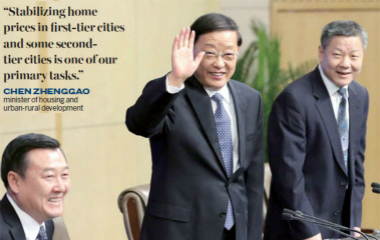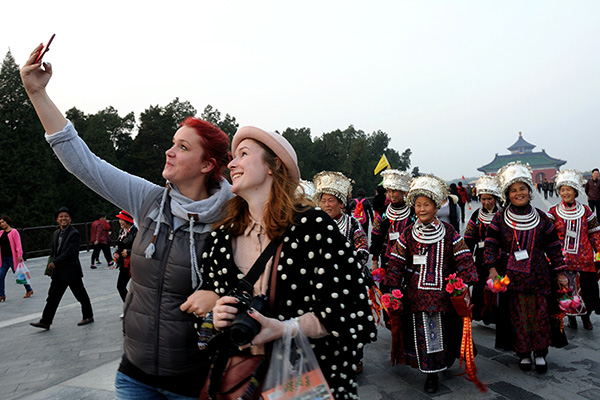China needs to further tap inbound tourism potential, study shows
Updated: 2016-03-22 17:54
By Liu Jing in London(chinadaily.com.cn)
|
|||||||||
Chinese tourists traveling overseas spent $215 billion in 2015, a massive 53 percent rise over the previous year, yet the potential for visitors going to China remains under-exploited, according to a key report by the London-based World Travel and Tourism Council.
The amount spent by visitors to China increased by only 3 percent during 2015, a total of 385 billion yuan ($61 billion), the WTTC said in its 2016 Economic Impact Report, which was released today.
Statistics from China's National Tourist Administration showed that the number of inbound tourists to China had been declining since showing some growth in 2011, although last year it recorded a slight increase of 4.1 percent to 134 million visitors.
The number of Chinese travellers heading abroad in 2015 rose by 9 percent over the previous year to 117million, the NTA said.
By contrast, the inbound tourism business in Japan rose by almost 50 percent in 2015, David Scowsill, president and chief executive of WTTC, said during an interview with China Daily.
"Tourists coming into China are more mature people focused on exploring the culture instead of buying branded goods," Scowsill said.
According to research last year by China Tourism Academy, most overseas travelers come to China for a mixture of business purposes and sightseeing. With above-average income, they usually travel with their families and friends. More than 70 percent of inbound tourists spend about $500 to 3,000 on their trip, transportation as the biggest expenditure.
The stagnation is the result of a series of reasons, including slower economic development in tourists' countries of origin and the appreciation of RMB, said Yang Jinsong, an associate researcher with China Tourism Academy.
"China's inbound tourism has entered a bottle-neck as the product development has been adhering to the same pattern since late 1970s and it will be really difficult to make a breakthrough under the outdated pattern," said Yang, who believed to improve the situation, China needs "supply-side reform" in this field.
For example, most of the overseas promotion of China's tourism products is done by traditional channels such as tourism exhibitions and traditional media.
However, a survey by Google and British market research firm Millward Brown in 2015 showed that 83 percent of overseas travelers heading for China collect information by internet. After searching for information through internet, 63 percent of tourists also choose to buy products or book services online.
Yang said "For local governments and tourism practitioners in China, inbound tourism is very important and the majority of promotion funds have been spent on this field. However, it seems that they haven't found the right way to do it."
Related Stories
Plenty of room for growth for inbound tourism 2016-03-29 08:38
Chocolate, beer: People fear attacks will hurt tourism 2016-03-29 08:14
Visit highlights China's role in tourism 2016-03-27 14:21
New media to play major role in promoting holistic tourism 2016-03-26 15:03
'Amazing' hike marks tourism year 2016-03-26 07:56
Today's Top News
Xi arrives in Czech Republic for state visit
Passengers released on Egypt hijacked plane
Panda to join Little Mole in new cartoon series
President optimistic for Sino-German cooperation
Info sharing 'is key' as Europe faces terror threat
Uneasy times as Belgium mourns the dead
Belgian bombing suspect still at large: Prosecutor
Belgian media withdraws reports of suspect's arrest
Hot Topics
Lunar probe , China growth forecasts, Emission rules get tougher, China seen through 'colored lens', International board,
Editor's Picks

|

|

|

|

|

|







